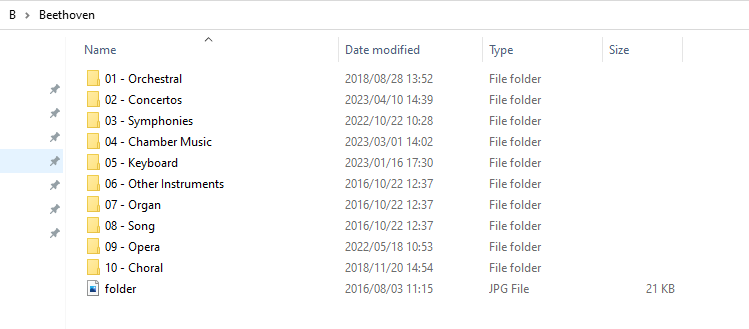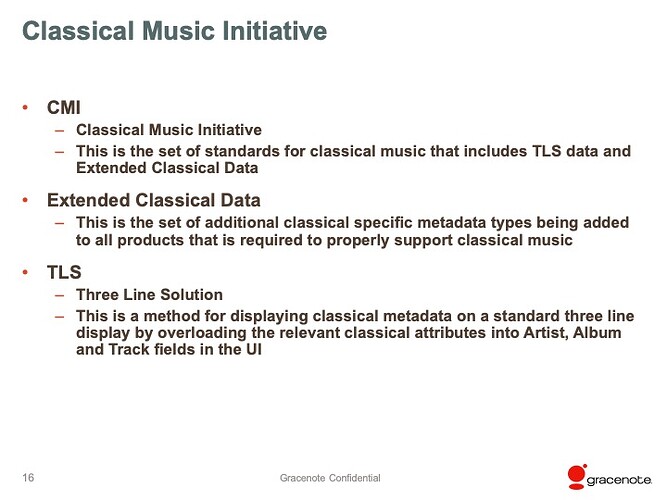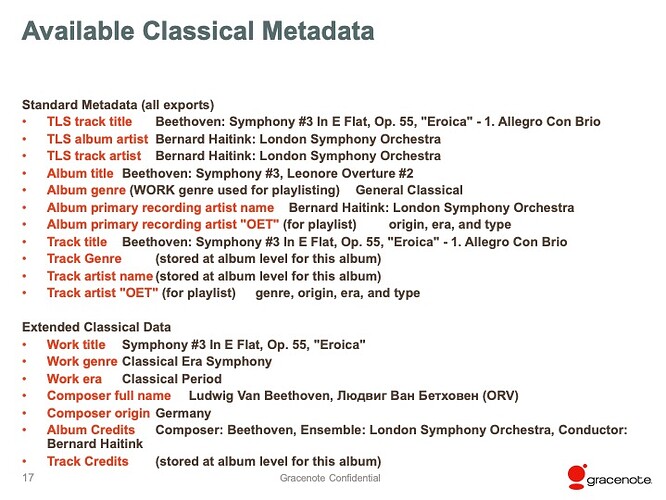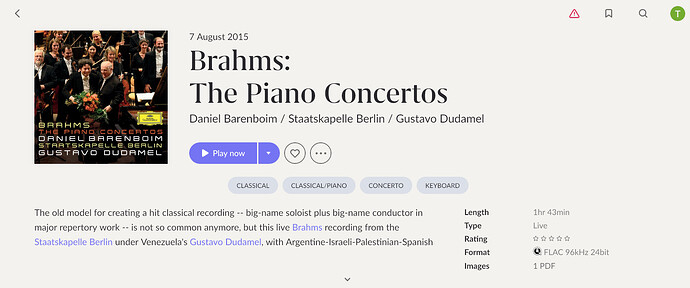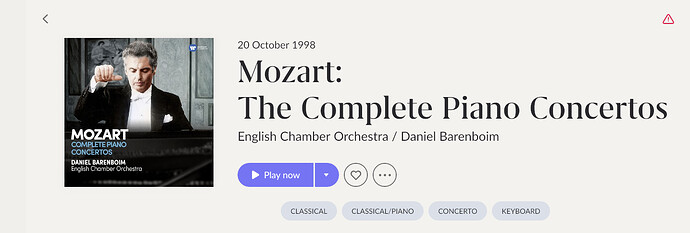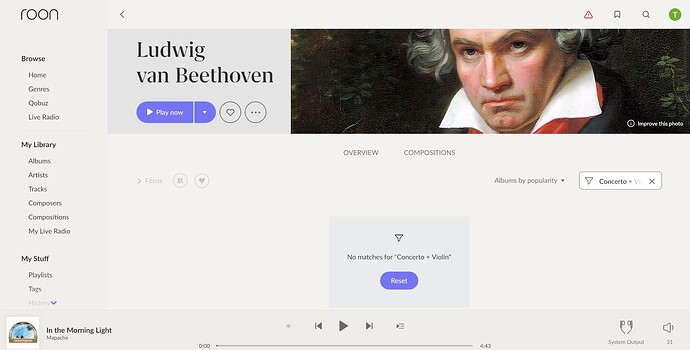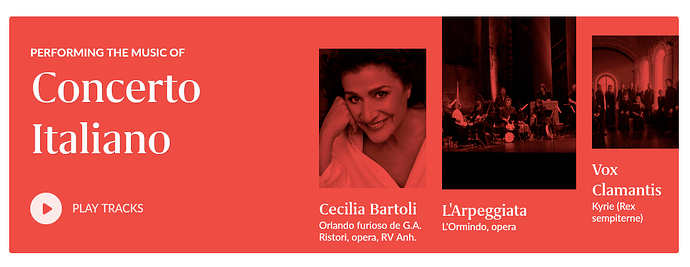I’ve now been at this editing chore of the music collection for over 10 years, first with Meridian, now with Roon so thought to pass on the limited wisdom accrued in that time after having made some mistakes which have taken hours of work to rectify.
There are many ways of cataloguing the music to make access using Roon easier so what I’ve done could be improved upon but I’m putting it forward to stimulate ideas and possibly help. There is limited consistency with how classical album data is presented so that makes organising and editing it a veritable PIA. But that does give the basic clue, whatever you decide upon, BE CONSISTENT. So here is the way I’ve attempted to organise –
- COMPOSERS. If an album is the music of one composer only, I put the surname (only) first so all such albums look like e.g. Beethoven: detail of the works; Handel: detail of the works
Many albums feature more than one composer so I use the header Various: Copy the Album Title and follow with a list of the composers involved (surnames only).
With some composers like Bach, there are more than one with thar surname but if JS is the composer, I do not add anything but do for CPE & others. Similarly with Williams, I use V.Williams for Vaughan – use whatever you prefer but be consistent.
The advantage of this is when the albums in Roon are displayed under ”Album Title” it puts all composer albums together , making them easier to find. That does leave the “Various” albums needing discovery using the search function, something that is improving as time goes on with updates.
- ARTISTS, I use full names for these but observe the following self imposed “rules”
(i) The conductor always appears before the Orchestra (I had not been careful enough about this so many albums were “buried” and not seen - correcting it has taken hours).
(ii) If there is an additional artist as in a concerto, he/she goes first, then the conductor and finally the orchestra
(iii) Operas and choral works pose a challenge as often there is more than one leading artist so it is most likely best to put the conductor first. Against that you might prefer to list a few like Joan Sutherland, Maria Callas first so you can quickly locate them but that is not really necessary as often these artists are associated with the one conductor.
The obvious advantage of this is that all albums of a particular artist are displayed together in Roon under “Artist” display.
-
TAGS If you are dissatisfied with the universal tags categorisation, Roon offers the opportunity for you to create your own simpler system. The one I originally created is not the best but I’ve been stuck with it and if I was starting again I would allocate one or more of each of the following tags to each album:
Chamber
Baroque & Early
Choral – chorus
Choral – small group
Choral – song
Concerto
Folk & Ethnic
Instrumental – brass
Instrumental – cello
Instrumental – guitar, lute etc
Instrumental – harp
Instrumental – harpsichord
Instrumental – organ
Instrumental – piano
incremental – Violin & viola
Instrumental – woodwind
Instrumental – Z Other
Mood
Oddball & Avante Garde
Opera – arias etc
Opera – complete
Oratorio
Orchestral -
ADDING MORE INFORMATION Roon has developed a lot in recent years so most albums link to more info but there is the chance to add more if desired, particularly to those unidentified. I concoct items (reviews, more pictures etc) using copy and paste in WORD, convert to PDF then add the item into the Windows Explorer folder. It then appears in Roon to be opened up from there.
-
Alternate cover graphic display. I design things using Publisher, convert to a jpg format, so it can then be inserted into the album when editing. At one stage I altered album display in sets so each one had a unique number or something else obvious in the graphics but am not doing this as much now because the Roon structure for the header allows more to be displayed there to identify particular albums in a set. But the option is there if you have the time and inspiration.
Bottom line in all this is that editing is a time consuming chore but doing it carefully and with consistency will ultimately pay dividends by making accessibility to music in your library easier.
